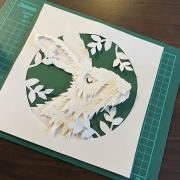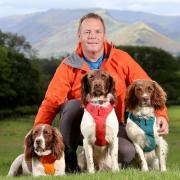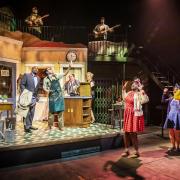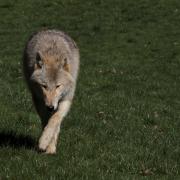Lakes and mountains may be the first features people think of when naming Cumbria’s natural phenomena, but author and photographer Kevin Sene can offer many more
From the Helm wind to tidal bores, wildflower displays to seabird cities, Cumbria has some spectacular natural phenomena. The county boasts an abundance of extraordinary occurrences in the sky, on land, in water and brought by weather, so it is little wonder that it features so strongly in Kevin Sene’s new book.
A keen hill walker and photographer with a scientific background in water and climate, Kevin is a fellow of both the Royal Geographical Society and the Royal Meteorological Society and contributes to teaching and research at Lancaster University. He has written three scientific books on the links between climate, floods and water resources and guides to the Cumbrian coast.

In his new book, Spectacular Britain: a spotter's guide to the UK's most amazing natural phenomena, he says, “there are absolutely amazing natural spectacles all around us: you just need to know where to look”.
His practical guide features more than 20 natural spectacles around the UK with expert tips on how to achieve the best sightings and insight into the astronomical, meteorological and ecological causes of events.
Some are easy to spot such as spectacular autumn colours, valley mists and hurling water birds; others graded five stars reflect only occasional occurrence and the higher degree of patience required to witness them, such as the Northern Lights.
There is danger too, of course, such as reaching remote waterfalls, clifftop bird watching and the fast-rising tides at Arnside.

Some phenomena may be felt, rather than seen, such as Eden’s Helm wind, although it can also create a dramatic, visible rolling cloud – the Helm Bar – that hovers over the valley, sometimes for several miles.
In simple terms, the Helm occurs when the wind blows from the east and air accelerates down to the valley floor. The Helm Bar forms when the wind streaming down from the ridge shoots skyward again and water vapour condenses in the rising air.
The Helm wind is difficult to predict but typically comes a few times a year in the right conditions; spring and early summer are most likely and Kevin recommends viewing it from roads either side of its path, near Culgaith and Temple Sowerby, or from Hartside Pass.

Another unusual cloud formation sometimes spotted in Cumbria are lenticular clouds. Kevin explains: "Lenticular clouds typically occur on the lee side of a mountain range and are often elongated and smooth edged, resembling a camera lens or almond. They often persist for many miles, with each cloud roughly parallel to the range with gaps of clear air in between."
The Lake District’s natural landscape is well known, perhaps less so its pockets of Atlantic rainforest. High levels of rainfall and air temperatures that are moderated by the influence of the sea combine in the northern Lakes to support temperate rainforest that provides rich habitat for birds, mammals and insects, lichens mosses, rare fungi and plants.
Elsewhere blossom and wildflowers provide uplifting natural spectacles, even if some of the species were planted by human hand. The snowdrops may have passed, but the damson blossom and bluebells are still to come.

“It is often said that more than half the world's bluebells grow in the UK, and most are of the native type,” writes Edinburgh-based Kevin. “While woodland is their most natural setting, one of the UK's most famous bluebell sites is to be found on the open moorland of Rannerdale, a picturesque valley leading down to the shores of Crummock Water. There was once an ancient woodland here and the bluebells are relics from that time.”
The wildflower displays are certainly easier to capture on camera than the likes of leaping salmon, but Kevin does feature the outlet weir at Windermere as a place to witness eels heading upstream.
While the county gets its fair share of rainfall, drought can have the effect of exposing some of the walls of Mardale Green, the village that was flooded to create Haweswater reservoir.

Waterfalls can be both natural – such as Cautley Spout and the cascades at Fisher Place Gill – and the result of human intervention in the case of the overflow spillway at Wet Sleddale reservoir, where water falls steeply down the concrete surface.
Sometimes wind and water can combine in the case of reverse flows, a phenomenon that occurs in gale force conditions when wind is blowing into a waterfall and towards a hillside creating the appearance of water flowing backwards.
Tidal bores at Arnside and the Duddon are only the start of Cumbria’s coastal spectacles. Our ‘seabird cities’ are sights to behold, such as Millom’s terns, but it is the sandstone cliffs at St Bees Head that Kevin highlights: “The star visitors here are guillemots, including nesting black guillemots some of just a few in England. Other species include kittiwakes, razorbills, fulmars and cormorants.”

Further along the coast, at South Walney Nature Reserve, “seals haul out on a remote shingle beach to breed and adults are sometimes spotted swimming near the shore at high tide”.
There are more natural phenomena in Cumbria that don’t make the book – dark skies, Foulshaw Moss ospreys, high brown fritillary butterflies, red squirrels, limestone pavement, lowland raised mires, saltmarsh, sand dunes, natterjack toads – but at the very least, it encourages people to get outside and start building their spectacle sighting record.
Spectacular Britain: a spotter’s guide to the UK’s most amazing natural phenomena (290pp, £20) is published by Conway.























![Cookham Barns 1925, Gilbert Spencer, Abbot Hall [credit Liss Llewellyn]](/resources/images/128x89/1x/17938067.jpg)
![Cookham Barns 1925, Gilbert Spencer, Abbot Hall [credit Liss Llewellyn]](/resources/images/180x180/1x/17938067.jpg)


